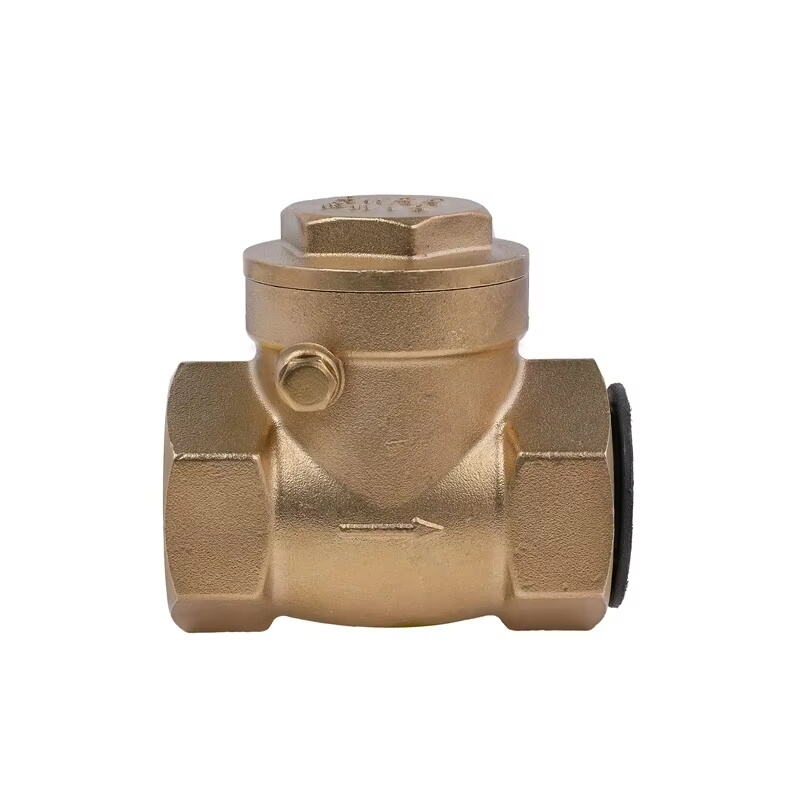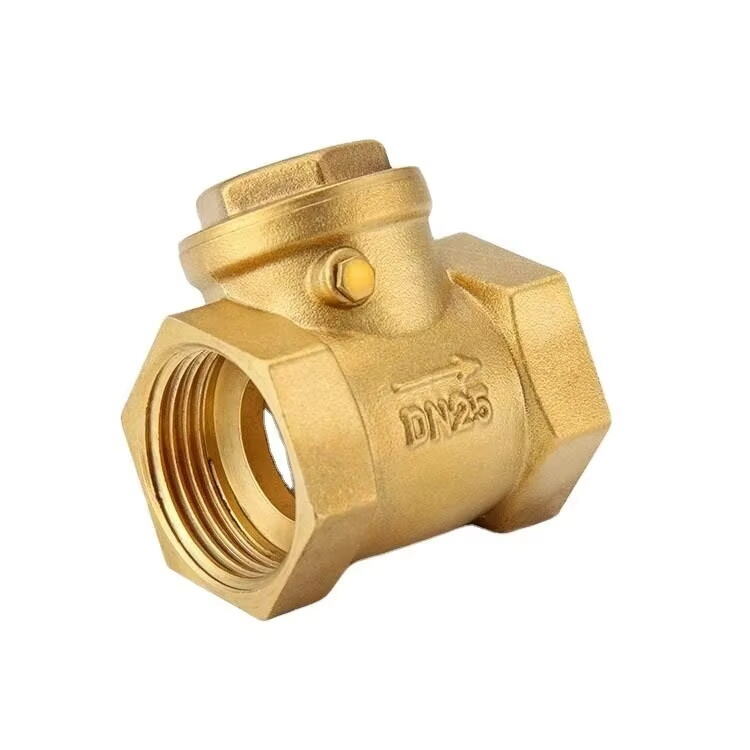Understanding Flow Direction in Fluid Systems
Efficient fluid control is essential across industrial and residential applications. Whether dealing with water, oil, gas, or chemicals, engineers must ensure that the flow of media within pipelines is properly managed. One device that plays a crucial role in preventing reverse flow and system damage is the check valve. Simple in design yet powerful in function, the check valve offers a passive solution to maintaining flow direction without requiring manual intervention or automated control.
By allowing flow in only one direction, a check valve ensures that backpressure or reverse flow does not compromise system components, cause contamination, or lead to system failure. It’s a common fixture in pumps, compressors, chemical lines, and HVAC systems. Understanding how check valves operate, their types, internal components, and proper maintenance strategies can help businesses and technicians ensure operational safety and efficiency.
Internal Design and Basic Operation
Key Components of a Check Valve
A check valve typically consists of a body, a disc or poppet, a seat, and often a spring mechanism. The valve body encases the internal elements and provides the inlet and outlet ports. The disc, which can take various shapes such as a ball, swing, or piston, is the moving part that reacts to fluid flow. The seat forms a sealing surface against which the disc rests when flow reverses, ensuring a tight seal.
In some check valve designs, a spring is used to push the disc toward the seat, enhancing the sealing function and ensuring closure even under low or no flow conditions. Other designs rely solely on gravity and backpressure to move the disc. Material selection for the components often depends on the application—stainless steel, brass, PVC, and elastomers are all commonly used for different media and environments.
Mechanism of One-Way Flow
When fluid enters the inlet side of a check valve, the pressure pushes the disc away from the seat, allowing the fluid to pass through the valve. If the flow stops or reverses, the disc returns to the seat either by gravity, spring force, or reverse pressure. This prevents the media from flowing backward.
This automatic, self-activating mechanism allows the check valve to operate without external power or control signals. It reacts solely to the pressure conditions of the fluid, making it a highly efficient and cost-effective solution for directional flow control.
Classification and Types of Check Valves
Swing Check Valves and Their Applications
Swing check valves use a disc that swings on a hinge or pivot. As fluid flows forward, the disc swings open; when flow stops or reverses, the disc swings back to the seat. This type of check valve is widely used in water distribution systems and low-velocity applications because of its simple design and low-pressure drop characteristics.
However, swing check valves require a horizontal or vertical position with upward flow to function correctly. They are not ideal in pulsating flow systems, as frequent opening and closing can lead to wear and noise. For stable, consistent flow conditions, swing check valves offer a highly durable and low-maintenance solution.
Ball, Lift, and Piston Check Variants
Ball check valves use a spherical disc that lifts off the seat when fluid flows in the forward direction. They are often used in sewage and slurry systems due to their ability to handle viscous or particulate-laden fluids. Lift check valves, by contrast, feature a disc that lifts vertically and drops onto the seat when flow ceases, commonly found in high-pressure systems.
Piston check valves work similarly to lift valves but include damping features to reduce water hammer and vibration. These designs are ideal for applications involving rapid flow changes or high pulsation rates, such as in reciprocating pump systems. Each of these check valve types offers unique benefits depending on system needs.
Selecting the Right Check Valve
Factors That Influence Valve Choice
Choosing the appropriate check valve for a specific application involves considering several factors. Fluid type, pressure rating, flow velocity, installation orientation, and operating temperature all play critical roles. For example, chemical processing systems may require corrosion-resistant materials, while HVAC applications may focus more on energy efficiency and minimal pressure loss.
The viscosity and particulate content of the fluid also affect valve selection. Ball or swing check valves handle dirty or thick fluids better than lift or piston types. By carefully matching the valve type to the system requirements, users can ensure long-term reliability and minimal maintenance issues.
Installation and Orientation Considerations
Proper installation of a check valve is essential for correct operation. Most check valves must be installed in a specific flow direction, clearly indicated by an arrow on the valve body. Installing the valve backward can prevent it from opening or closing properly, leading to system failure.
Vertical or horizontal orientation must also align with the valve type. Swing and ball check valves often require horizontal installation with upward flow, while lift and piston designs can be more flexible. Improper alignment may cause disc misalignment, reduced sealing, or valve damage.

Performance Benefits in Piping Systems
Preventing Backflow and Equipment Damage
The primary function of a check valve is to prevent reverse flow, which can damage sensitive equipment such as pumps, compressors, and filters. Reverse flow may also lead to contamination of upstream media or chemical mixing in multi-fluid systems. By stopping backflow, a check valve acts as a safeguard for upstream equipment and system stability.
In critical applications such as chemical dosing systems, fire protection piping, or boiler feed systems, check valves maintain isolation and prevent fluid loss. Their rapid closing action minimizes risks and enhances operational safety across various industries.
Enhancing System Efficiency
Check valves help stabilize pressure within a pipeline by allowing unidirectional flow and reducing the effects of pressure fluctuations. This contributes to energy savings and reduces mechanical stress on pumps and other components. Systems with well-designed check valves experience less turbulence, noise, and wear.
Moreover, by eliminating the need for manual valves or active control devices, check valves lower operational complexity and cost. In automated systems, they play a supporting role by complementing flow control strategies with passive safety features.
Common Issues and Troubleshooting
Identifying Symptoms of Valve Failure
Despite their simplicity, check valves can fail if not properly maintained. Common symptoms of malfunction include water hammer noise, backflow, pressure loss, or leakage. These issues may arise from worn-out seals, stuck discs, debris obstruction, or improper installation.
Frequent cycling in high-pulsation systems may also lead to fatigue or hinge damage. Early detection of these symptoms can help prevent more serious failures and reduce unplanned downtime.
Maintenance and Replacement Strategies
Routine inspection and maintenance are recommended for check valves, especially in high-pressure or critical systems. Periodically remove the valve for cleaning, especially in applications with dirty or solid-laden fluids. Ensure that the disc moves freely and that the sealing surfaces are intact.
In the case of damage or wear, it’s often more cost-effective to replace the valve than attempt complex repairs. Use high-quality, application-specific replacements to maintain system performance and compatibility. Keeping maintenance logs helps track valve life cycles and plan replacements proactively.
Design Innovations and Industry Trends
Materials and Coatings for Enhanced Durability
Advancements in material science have improved the durability and versatility of check valves. Modern valves are now constructed with advanced polymers, stainless steel alloys, and special coatings to withstand aggressive chemicals, extreme temperatures, and high pressures.
Coatings such as PTFE, epoxy, or rubber linings extend service life and reduce the risk of corrosion or scaling. These materials ensure that check valves perform reliably in demanding environments, from offshore oil rigs to high-purity pharmaceutical lines.
Smart Check Valves and Digital Monitoring
With the rise of digital monitoring technologies, smart check valves are becoming more common in industrial systems. These valves can be equipped with sensors that monitor flow direction, pressure drops, or valve position, providing real-time diagnostics and alerts.
Integration with SCADA or IoT systems allows operators to detect valve malfunctions remotely and schedule maintenance before failures occur. These innovations contribute to safer and more efficient system operations, especially in large-scale or automated facilities.
Frequently Asked Questions
How does a check valve differ from other valves?
A check valve allows flow in one direction only and closes automatically to prevent reverse flow.
Unlike manual or automated valves, it operates passively based on fluid pressure without human or system input.
What are common causes of check valve failure?
Common causes include debris buildup, worn seals, corrosion, and improper installation.
Routine inspection and proper material selection can help prevent most of these issues.
Can check valves be used in vertical pipe installations?
Yes, many check valves can be installed vertically, but the orientation must align with the valve’s design.
Always refer to manufacturer guidelines to ensure correct positioning and reliable operation.

